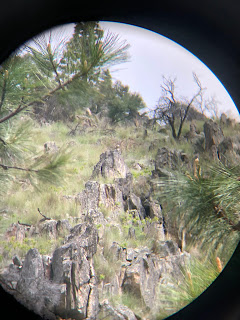17 APRIL 2020
Backyard Explorations - Birds and signs of Spring!
Habitat Components!
What makes up habitat?
Habitat is made up of 4 main components: Food, Water, Space and Shelter. Other components of habitat are Sunlight and Air
Birds, like us, need all 6 of these components in order to survive. We all need food and water in order to give us energy and maintain our basic bodily functions. We all need an adequate space to live in and reproduce and shelter to protect us from the elements. We need air to breathe and sunlight helps us to quantify our days and times. Sunlight for birds can also trigger how they move about the landscapes and when they migrate to different areas. Without these factors we, including our birds, would not be able to survive.
Fun Fact: Other organisms can live without sunlight and air! Anaerobic (a cell or process that does not require oxygen (air)) organisms can live and survive without oxygen and some without the exposure to light.
In the video we focused on being stewards of our lands and natural areas. The video highlights how we can provide aspects of habitat (Food, Water and Shelter) for the birds in our own backyards.
Food
We can provide birds food in our own back yards in a variety of ways. For our seed eaters (finches, chickadees and others) we can provide bird feeders and suet blocks for them to visit and munch on. For our insect and nectar eaters (hummingbirds, flycatchers and others) we can provide a garden or a flower bed. This allows the insect eaters to perform a valuable arthropod reduction service and can quite possibly aid in the protection of you garden and flower beds from hungry little bugs. Our nectar eaters are able to visit the flowers and sip the sweet nectar. If you would like to attract more humming birds you can also hang a hummingbird feeder. Typically these feeders come with a packet that you can mix with water and make a tasty drink for them! If yours didn't come with a packet you and always make your own by visiting
This Link!
This is a short video of a Northern Red-Shafted Flicker coming to munch on our suet block!
Water
We can provide water sources in our own back yards to birds by simply putting out birds baths! This allows the birds to visit and great a drink or they can even take a bath! This allows the birds to get the water source they desire and get clean at the same time. If you choose to have a bird bath it is good practice to change out the water every or every other day. This way the birds have access to clean water. Birds can also use ponds, lakes, creeks and sometimes our swimming pools to get the water they need as well.
Shelter
Shelter is any place where a bird can rest, sleep or raise young. Shelters look different for different birds. It can be a nice place on or in a tree, it can be a nesting site, it can be a bird box. All in all a shelter is a place that birds can be protected from the elements. One way that you can provide shelter for birds is to put out a bird box for them. You can also provide shelter by keeping your trees and bushes healthy and providing shrubbery around your house, building brush piles away from your house and growing native seed bearing ornamental and lawn grasses. If you have barns, sheds, garages, decks, patios or other structures on your property these may also be suitable options for birds to seek shelter.
In this video I am calling back and forth to a
Black-Capped Chickadee pair. They have found
shelter and I believe are nesting in this awesome
Colorado Blue Spruce tree!
Don't forget that you can also help out your bird friends and be a good steward by picking up litter and other micro trash!! Not only does this protect our bird buddies but it also helps us to keep our common spaces nice and free of unnatural debris!
Actual video to come soon. It was too large to put on in one go so I have to make a few edits.








